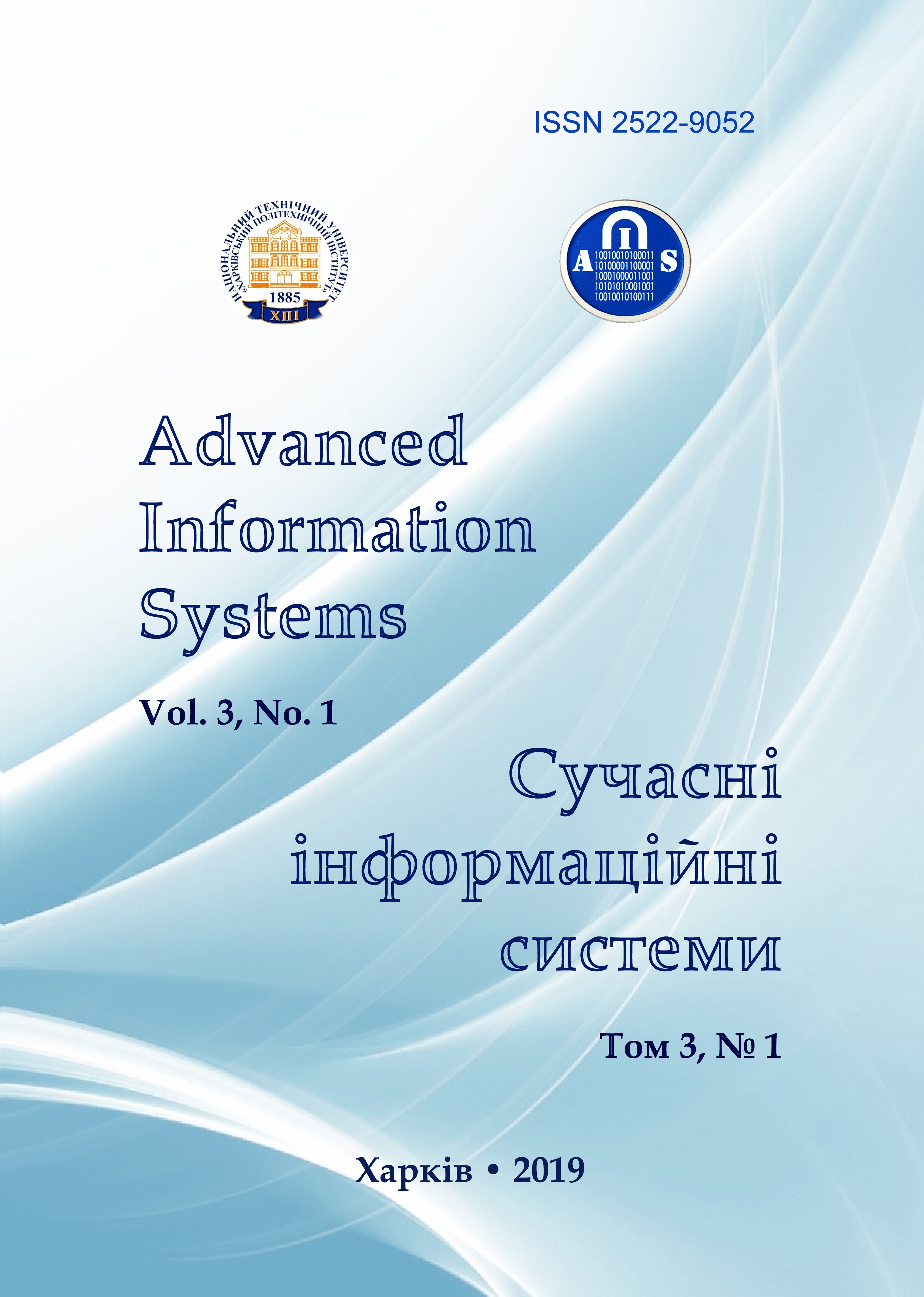SEPARABLE PROGRAMMING METHOD FOR SOLVING MULTI-DIMENSIONAL PROBLEMS OF OPTIMIZING THE PARAMETERS OF LASER INFORMATION MEASUREMENT SYSTEMS
Main Article Content
Abstract
The solution of optimization problems of laser information-measuring systems and their information and measurement channels, including functional elements for multiplicative signals, structures and technical parameters on a vector of quality indicators presented in tactical-technical requirements using expenditure indicators, is one from the main components of the theory of construction of such systems. Purpose of the article. Development of a universal method for solving multidimensional problems of optimization of parameters of laser information-measuring systems, no matter how it depends on the form of communication functions. The article discloses a separable programming method for optimizing laser information-measuring systems. The developed method uses the existing methods of modern mathematical programming with a separable representation of value and represents the optimum in analytical form, which allows it to "link" individual blocks of optimization problems into a common (single) solution. The method solves such problems as: multidimensionality, convergence of results, simplicity (universality), construction of exchange curves, and so on. It can be applied to any optimization problem as one-functional and multifunctional LIMS as a whole, and their information and measuring channels separately (including their functional elements). Analytical expressions for calculations are presented.
Article Details
References
Gutkin, L.S. (1974), “Optymyzacyja radioelektronnyh ustroystv po sovokupnosty pokazateley kachestva” [Optimization of radio electronic devices on the aggregate of indexes of quality], Moscow, 278 p.
Woodvord, F.M. (1968), “Teoriyja verojatnosti i teoriyja informatsii s primeniem v radiolokatsii” [Probability theory and information theory with application in the radio-location], Moscow, 380 p.
Aloshin, G.V. and Bogdanov, Y.A. (2008), “Effektivnost slognyh radiotehnicheskih system” [Efficiency of the difficult radiotechnical systems], Kyiv, 288 p.
Aloshin, G.V. (2009), “Ocinka jakosti informacionno-vimiruvalnih sistem” [Estimation of quality of the informatively-measuring systems], Kharkiv, 300 p.
Aloshin, G.V. (2005), “Efektivnist informacionno-vimiruvalnih radiotehnichnih sistem” [Efficiency of the informatively-measuring radiotechnical systems], Kharkiv, 294 p.
Ustinov, N.D. (1984), “Lasernaja lokacija” [Laser location], Engineer, Moscow, 272 p.
Kolomiytsev, A.V. (2013), “Informatsionnyie tehnologii i sistemyi v upravlenii, obrazovanii, nauke” [Information technologies and systems in management, education, science], Digital printing house № 1, Kharkiv, 278 p.
Aloshin, G.V. and Kolomiytsev, A.V. (2014), “Informazionnie sistemi v upravlenii, obrazovanii, promishlennosti” [The information systems in a management, education, industry], The Generous farmstead plus, Kharkiv, 498 p.
Aloshin, G.V. and Kolomiytsev, A.V. (2015), “Informazionnie tehnologii i zashita informazii v informazionno-kommunikazionnih sistemah” [Information technologies and protection in the of informatively-communication systems], The Generous farmstead plus, Kharkiv, 486 p.
Aloshin, G.V. and Kolomiytsev, A.V. (2017), “Informatsionnyie tehnologii: problemyi i perspektivyi” [Information technology: challenges and perspectives], Kharkiv, 447 p.
Kazakov, E.L., Kazakov, A.E., Vasiliev, D.G., Kolomiytsev, A.V. and Ryzhov, D.N. (2010), “Raspoznavanie radiolokatsionnyih tseley po signalnoy informatsii” [Recognition of radar targets for signaling information], City Printing House, Kharkiv, 232 p.
Kudriashov, V. (2016), “Experimental Evaluation of Opportunity to Improve the Resolution of the Acoustic Maps”, Kountchev R. and Nakamatsu K. (eds.), New Approaches in Intelligent Image Analysis, Intelligent Systems Reference Library, Springer International Publishing Switzerland, 108, pp. 353-373, DOI: https://doi.org/10.1007/978-3-319-32192-9_11
Malashin, M.S. (1983), “Osnovi proektirovanija lasernih lokazionnih sistem” [Bases of planning of the laser location systems], Higher school, Moscow, 297 p.
Amin Salih M. (2017), “Optimal Forecast Model for Erbil Traffic Road Data”, ZANCO Journal of Pure and Applied Sciences, Volume 29, No 5, pp. 137-145, DOI: https://doi.org/10.21271/ZJPAS.29.5.15
Gomathi B, Karthikeyan N K, Saravana Balaji B, “Epsilon-Fuzzy Dominance Sort Based Composite Discrete Artificial Bee Colony optimization for Multi-Objective Cloud Task Scheduling Problem”, International Journal of Business Intelligence and Data Mining, Volume 13, Issue 1-3, 2018, pp. 247-266, DOI: https://doi.org/10.1504/IJBIDM.2018.088435
Kosenko V. (2017), “Mathematical model of optimal distribution of applied problems of safety-critical systems over the nodes of the information and telecommunication network”, Suchasni informatsiyni systemy [Advanced Information Systems], Vol. 1, No. 2, pp. 4–9, DOI: https://doi.org/10.20998/2522-9052.2017.2.01
Kuchuk, G., Nechausov, S., and Kharchenko, V. (2015), “Two-stage optimization of resource allocation for hybrid cloud data store”, International Conference on Information and Digital Technologies, IDT 2015, pp. 266-271, DOI: https://doi.org/10.1109/DT.2015.7222982
Molebnii, V.V. (1981), “Optiko-lokazionnie sistemi” [Optical location systems], Engineer, Moscow, 184 p.
Kaumen, M. (1993), “Lazernaja kosmicheskaja svjaz” [Laser space connection], Radio and connection, Moscow, 240 p.
Wolfe, Ph. (1959), “The simplex method for quadrate programming”, Econometrica, 28, No. 3, pp. 600–606.
